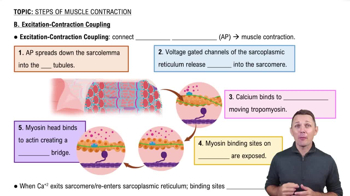Multiple Choice
The sodium-potassium ion pump will __________.
2549
views
2
rank
 Verified step by step guidance
Verified step by step guidance Verified video answer for a similar problem:
Verified video answer for a similar problem:



 7:53m
7:53mMaster Resting Membrane Potential with a bite sized video explanation from Bruce Bryan
Start learning